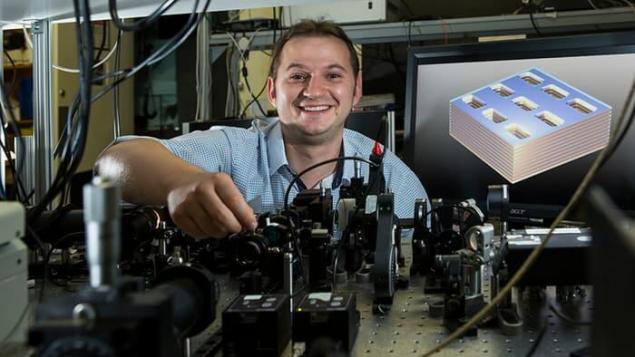761
The new metamaterial can generate energy from the heat of the sun 24 hours a day
You probably heard about photovoltaic cells, but what about thermophotovoltaic?
For electricity production, such elements use heat from the infrared radiation, and they could provide us with more energy efficient than traditional solar panels that we use.
And most interesting is that they continue to work in the dark. Researchers at the Australian National University and the University of Berkeley, California, has recently developed a new metamaterial that could revolutionize Thermophotovoltaic elements.
Lead researcher Sergey Kruk (Sergey Kruk) first suggested that this particular metamaterial can offer great benefits to thermophotovoltaic elements, he teamed up for further study of the theory with scientists from Berkeley who have extensive experience in the creation of metamaterials. The result is a metamaterial, which can be used as an emitter, to significantly improve the efficiency of thermophotovoltaic elements.

The metamaterial designed specifically with such properties that are not found in nature. The researchers used gold, magnesium fluoride and silicon nitride to create a material which "lights up in an unusual way" when exposed to infrared radiation.
"Thermophotovoltaic cells have the potential to be much more efficient than solar panels," Crook said. "Our metamaterial overcome a number of obstacles and can help unlock the potential of thermophotovoltaic elements».

An additional advantage thermophotovoltaic elements is that they do not require direct sunlight, so they can produce energy, regardless of the time of day. Plus, the metamaterial used in these elements is very small, according to Crook, more than 12 thousands of "building blocks" of a substance can fit on the cross section of a human hair.
Thermophotovoltaic These elements can be used in an unusual way and for electric vehicles. When integrated into the motor, they can convert to heat energy. "For the production of this material is the Berkeley team has been working at the limit of technological capabilities," Crook said. Scientists suggest that this new technology can stimulate the development of super efficient solar cells, forever changing the way energy.
For electricity production, such elements use heat from the infrared radiation, and they could provide us with more energy efficient than traditional solar panels that we use.
And most interesting is that they continue to work in the dark. Researchers at the Australian National University and the University of Berkeley, California, has recently developed a new metamaterial that could revolutionize Thermophotovoltaic elements.
Lead researcher Sergey Kruk (Sergey Kruk) first suggested that this particular metamaterial can offer great benefits to thermophotovoltaic elements, he teamed up for further study of the theory with scientists from Berkeley who have extensive experience in the creation of metamaterials. The result is a metamaterial, which can be used as an emitter, to significantly improve the efficiency of thermophotovoltaic elements.

The metamaterial designed specifically with such properties that are not found in nature. The researchers used gold, magnesium fluoride and silicon nitride to create a material which "lights up in an unusual way" when exposed to infrared radiation.
"Thermophotovoltaic cells have the potential to be much more efficient than solar panels," Crook said. "Our metamaterial overcome a number of obstacles and can help unlock the potential of thermophotovoltaic elements».

An additional advantage thermophotovoltaic elements is that they do not require direct sunlight, so they can produce energy, regardless of the time of day. Plus, the metamaterial used in these elements is very small, according to Crook, more than 12 thousands of "building blocks" of a substance can fit on the cross section of a human hair.
Thermophotovoltaic These elements can be used in an unusual way and for electric vehicles. When integrated into the motor, they can convert to heat energy. "For the production of this material is the Berkeley team has been working at the limit of technological capabilities," Crook said. Scientists suggest that this new technology can stimulate the development of super efficient solar cells, forever changing the way energy.
Electric Coupe and Roadster Qiantu K50 fall onto a conveyor
Enough to eat a spoonful of this facility before breakfast and dinner, to restore the joints!























